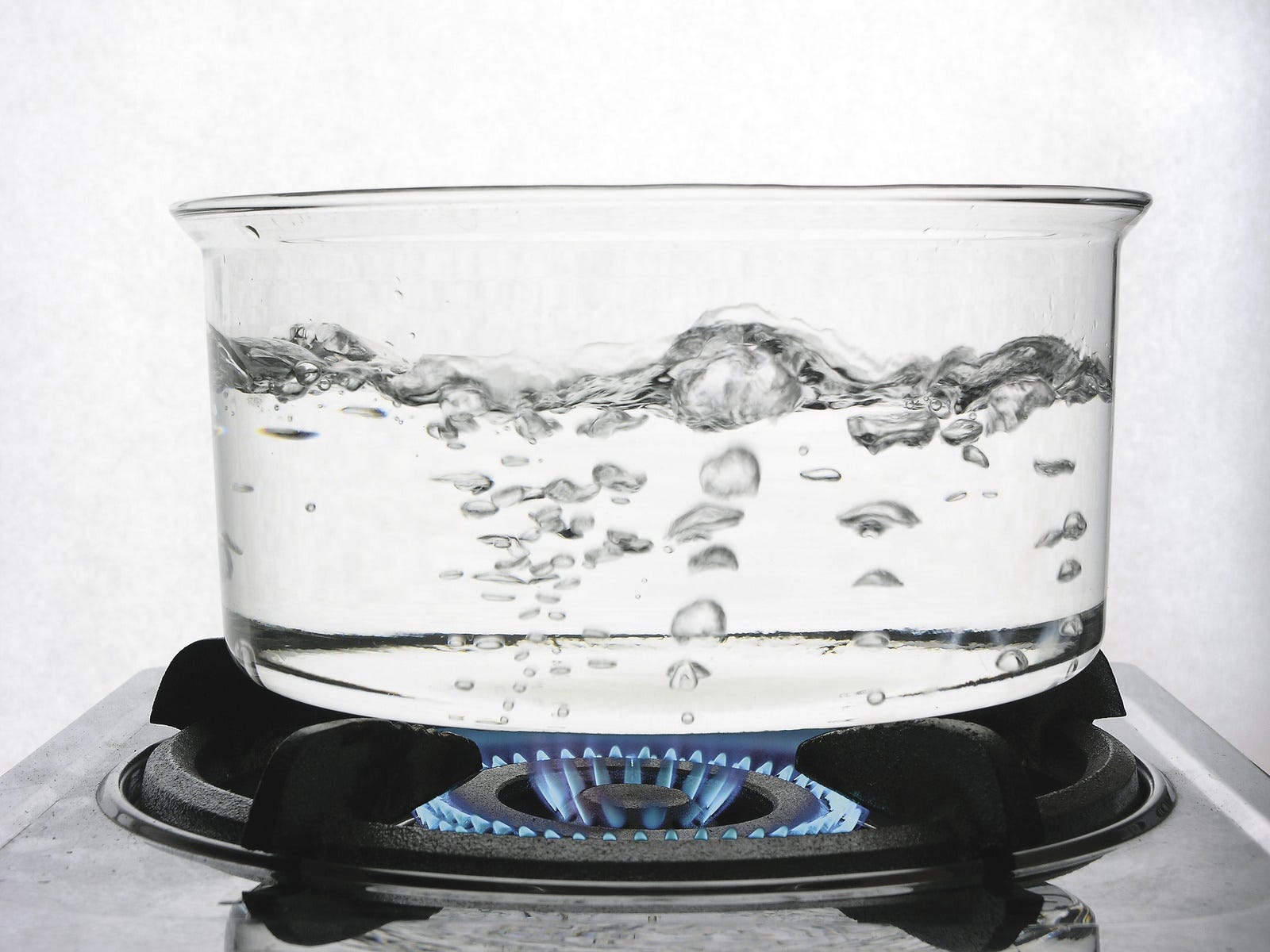Home>Science & Environment>The Melting Point Of Plastic: Understanding Its Temperature Range


Science & Environment
The Melting Point Of Plastic: Understanding Its Temperature Range
Published: February 19, 2024
Discover the temperature range of plastic and its melting point in this comprehensive guide. Learn how it impacts the environment and the science behind it. Ideal for those interested in science and the environment.
(Many of the links in this article redirect to a specific reviewed product. Your purchase of these products through affiliate links helps to generate commission for Temperatures.com, at no extra cost. Learn more)
Table of Contents
Introduction
Plastic, a ubiquitous material in our modern world, has revolutionized industries and daily life. From packaging and construction to healthcare and electronics, plastic serves as a cornerstone of innovation and convenience. However, understanding the behavior of plastic, particularly its melting point, is crucial for harnessing its potential effectively.
Plastic is a synthetic or semi-synthetic material composed of polymers, which are large molecules made up of repeating subunits. These polymers give plastic its unique properties, such as flexibility, durability, and moldability. The melting point of plastic refers to the temperature at which it transitions from a solid to a liquid state. This critical characteristic determines the conditions under which plastic can be shaped, recycled, and utilized in various applications.
As we delve into the world of plastic, it becomes evident that its melting point is a fundamental aspect that influences its processing and performance. Whether in manufacturing processes or everyday use, knowing the temperature range at which plastic transforms is essential for ensuring its structural integrity and functionality.
In the following sections, we will explore the importance of understanding the melting point of plastic, the factors that influence this property, common types of plastic and their respective melting points, and the practical applications of this knowledge. By gaining insights into these facets, we can appreciate the significance of comprehending the behavior of plastic at different temperature ranges and its implications across diverse industries.
Importance of Understanding the Melting Point of Plastic
Understanding the melting point of plastic is paramount due to its profound implications across industries and everyday applications. The melting point serves as a pivotal parameter that influences the processing, shaping, and performance of plastic materials. Here's why comprehending this characteristic is of utmost importance:
-
Manufacturing Processes: In industrial settings, the knowledge of a plastic's melting point is indispensable for manufacturing processes. It dictates the temperature at which the plastic can be molded, extruded, or formed into specific shapes. Different types of plastic have distinct melting points, and understanding these variations enables manufacturers to select the most suitable materials for their production requirements.
-
Quality Control: Understanding the melting point of plastic is crucial for maintaining quality standards. By ensuring that the plastic is processed within its designated temperature range, manufacturers can uphold the structural integrity and functional properties of the final products. This knowledge also aids in preventing defects and inconsistencies that may arise from improper processing temperatures.
-
Product Development: For engineers and product designers, knowledge of the melting point of plastic is essential for creating innovative and durable products. It enables them to select the appropriate plastic materials based on their melting characteristics, ensuring that the products can withstand intended operating conditions without deforming or losing their structural integrity.
-
Recycling and Sustainability: Understanding the melting point of plastic is pivotal in the recycling process. Different types of plastic require specific melting temperatures for effective recycling. By knowing these melting points, recycling facilities can optimize their processes, contributing to environmental sustainability by reducing plastic waste and promoting the circular economy.
-
Safety Considerations: In applications where plastic components are exposed to elevated temperatures, such as in automotive or electronic devices, understanding the melting point is crucial for ensuring safety. It allows engineers to select plastic materials that can withstand the anticipated operating temperatures, preventing potential hazards or malfunctions due to material degradation.
-
Consumer Awareness: Knowledge of the melting point of plastic empowers consumers to make informed decisions about the use and care of plastic products. Understanding the temperature limitations of different plastics can help individuals avoid exposing them to conditions that may lead to deformation or release of harmful substances, thereby promoting safety and longevity of the products.
In essence, understanding the melting point of plastic is not only vital for industrial processes and product development but also plays a significant role in promoting sustainability, safety, and informed consumer choices. This knowledge forms the foundation for leveraging the diverse properties of plastic while ensuring its responsible and effective utilization across various domains.
Factors Affecting the Melting Point of Plastic
The melting point of plastic, a critical characteristic that defines its behavior under varying temperatures, is influenced by several key factors. Understanding these factors is essential for comprehending the diverse melting points exhibited by different types of plastic and their implications in practical applications.
1. Polymer Structure:
The molecular structure of the polymer comprising the plastic significantly impacts its melting point. The arrangement of polymer chains, the presence of branching or cross-linking, and the type of chemical bonds within the polymer backbone all contribute to the material's thermal properties. For instance, linear polymers with minimal branching tend to have higher melting points compared to highly branched or cross-linked polymers, as the former exhibit stronger intermolecular forces that require higher energy input for melting.
2. Molecular Weight:
The molecular weight of the polymer chains plays a crucial role in determining the melting point of plastic. Generally, polymers with higher molecular weights require more energy to overcome the intermolecular forces holding the chains together, resulting in higher melting points. Conversely, lower molecular weight polymers exhibit lower melting points due to weaker intermolecular interactions.
3. Crystallinity:
The degree of crystallinity in a plastic material significantly influences its melting point. Crystalline regions within the polymer structure contribute to higher melting points, as the ordered arrangement of polymer chains in crystalline regions requires more energy to disrupt compared to the amorphous regions. Therefore, plastics with higher crystallinity typically exhibit higher melting points, while amorphous plastics have lower melting points.
4. Copolymer Composition:
The composition of copolymers, which are formed by the polymerization of two or more different monomers, can impact the melting point of plastic. The arrangement and proportion of monomer units within the copolymer chain influence the overall thermal behavior of the material. Copolymers with alternating or block arrangements of monomer units may exhibit different melting points compared to random or statistical copolymers due to variations in the polymer chain structure and interactions.
5. Additives and Fillers:
The incorporation of additives and fillers in plastic formulations can affect the melting point of the material. Additives such as plasticizers, flame retardants, and reinforcing agents can alter the intermolecular interactions within the polymer matrix, thereby influencing its melting behavior. Additionally, fillers and reinforcements can impact the thermal conductivity and crystallization kinetics of the plastic, consequently affecting its melting point.
By considering these factors, it becomes evident that the melting point of plastic is a complex interplay of molecular structure, composition, and external influences. This understanding forms the basis for selecting and processing plastic materials in diverse applications, ensuring optimal performance and functionality based on their thermal characteristics.
Common Types of Plastic and Their Melting Points
Plastics encompass a wide range of materials, each exhibiting distinct properties and melting behaviors. Understanding the melting points of common types of plastic is essential for selecting the appropriate materials for specific applications and ensuring their proper processing and utilization. Here are some prevalent types of plastic and their respective melting points:
Read more: How to Understand Zone 8 Temperature Range
1. Polyethylene (PE)
- Low-Density Polyethylene (LDPE): LDPE, known for its flexibility and toughness, has a melting point ranging from 105°C to 115°C. This characteristic makes it suitable for applications requiring heat-sealing and flexibility, such as packaging films and containers.
- High-Density Polyethylene (HDPE): HDPE, valued for its strength and chemical resistance, exhibits a higher melting point of approximately 130°C to 135°C. This property enables its use in diverse applications, including pipes, bottles, and industrial containers.
2. Polypropylene (PP)
- Polypropylene is known for its high melting point, typically ranging from 160°C to 170°C. This thermoplastic polymer's exceptional heat resistance and durability make it ideal for applications such as automotive components, medical devices, and food containers.
3. Polyvinyl Chloride (PVC)
- Polyvinyl Chloride has a melting point in the range of 100°C to 160°C, depending on its formulation and additives. PVC's versatility and flame-retardant properties make it suitable for a wide array of applications, including pipes, cable insulation, and construction materials.
4. Polystyrene (PS)
- General-Purpose Polystyrene (GPPS): GPPS exhibits a melting point around 200°C to 220°C, making it suitable for injection molding and extrusion processes. It finds applications in consumer goods, packaging, and disposable utensils.
- High-Impact Polystyrene (HIPS): HIPS, known for its impact resistance, has a slightly lower melting point, typically ranging from 180°C to 200°C. This characteristic makes it suitable for applications requiring toughness, such as refrigerator liners and packaging materials.
Read more: Understanding Cold Weather And Its Impact
5. Polyethylene Terephthalate (PET)
- Polyethylene Terephthalate has a relatively high melting point, typically around 250°C to 260°C. This thermoplastic polymer's exceptional thermal stability and transparency make it a preferred choice for beverage bottles, food packaging, and synthetic fibers.
6. Polycarbonate (PC)
- Polycarbonate exhibits a high melting point, typically ranging from 250°C to 300°C. Its exceptional impact resistance and optical clarity make it suitable for applications requiring durability and transparency, including eyewear, electronic components, and automotive parts.
7. Acrylonitrile Butadiene Styrene (ABS)
- ABS has a moderate melting point, typically ranging from 210°C to 240°C. This thermoplastic's balance of strength, impact resistance, and machinability makes it suitable for diverse applications, including automotive components, electronic housings, and consumer goods.
By understanding the melting points of these common types of plastic, manufacturers, engineers, and designers can make informed decisions regarding material selection, processing parameters, and application suitability. This knowledge forms the basis for leveraging the diverse properties of plastic materials while ensuring their optimal performance and functionality across various industries and consumer products.
Applications of Knowing the Temperature Range of Plastic
Understanding the temperature range of plastic is instrumental in a myriad of applications across industries, influencing the selection, processing, and performance of plastic materials. This knowledge serves as a guiding factor in harnessing the unique properties of different types of plastic while ensuring their suitability for specific uses. Here are diverse applications where the temperature range of plastic plays a pivotal role:
1. Manufacturing and Engineering:
In the manufacturing and engineering sectors, knowledge of the temperature range of plastic is indispensable for shaping and forming components. From injection molding to extrusion processes, understanding the melting and softening points of plastic enables precise control over manufacturing parameters. This knowledge facilitates the production of intricate parts, such as automotive components, electronic housings, and consumer goods, where the temperature range dictates the material's behavior during processing.
2. Packaging and Consumer Goods:
The temperature range of plastic directly impacts its suitability for packaging applications. For instance, in the food and beverage industry, the selection of plastic materials with specific temperature tolerances is crucial for ensuring the integrity and safety of packaged products. Understanding the temperature range also influences the design of consumer goods, such as kitchenware, toys, and electronic devices, where the plastic components must withstand varying thermal conditions during use.
3. Construction and Infrastructure:
In the construction and infrastructure sectors, the temperature range of plastic materials is a critical consideration for applications such as pipes, fittings, and insulation. Plastic components used in building and construction must exhibit thermal stability and resistance to temperature fluctuations, ensuring long-term durability and performance. Knowledge of the temperature range enables the selection of suitable plastic materials for diverse environmental conditions and structural requirements.
4. Healthcare and Medical Devices:
The healthcare industry relies on plastic materials with precise temperature characteristics for medical devices, equipment, and packaging. Understanding the temperature range of plastic is essential for ensuring the sterilization and safe usage of medical products, as well as for maintaining the integrity of pharmaceutical packaging under varying storage conditions. This knowledge contributes to the reliability and safety of healthcare-related plastic applications.
5. Automotive and Aerospace:
In the automotive and aerospace sectors, the temperature range of plastic significantly influences the selection of materials for interior and exterior components. Plastic materials used in vehicle interiors, exterior trims, and aircraft interiors must withstand temperature variations, UV exposure, and mechanical stresses. Knowledge of the temperature range enables engineers to choose plastic materials that meet stringent performance requirements in these demanding applications.
6. Environmental Sustainability:
Understanding the temperature range of plastic is pivotal for promoting environmental sustainability through effective recycling and waste management. Different types of plastic require specific temperature conditions for recycling processes to be efficient and yield high-quality recycled materials. This knowledge supports the development of sustainable practices and technologies aimed at reducing plastic waste and promoting the circular economy.
7. Research and Development:
In research and development endeavors, knowledge of the temperature range of plastic fuels innovation in material science and polymer engineering. Researchers and scientists leverage this understanding to explore novel plastic formulations, advanced processing techniques, and tailored material properties. This knowledge serves as a foundation for developing cutting-edge plastic materials with enhanced thermal characteristics for future applications.
In essence, the applications of knowing the temperature range of plastic are diverse and far-reaching, encompassing industries, consumer products, sustainability initiatives, and technological advancements. This knowledge forms the cornerstone for leveraging the unique properties of plastic materials while ensuring their optimal performance and functionality across various domains.
Conclusion
In conclusion, the melting point of plastic is a fundamental property that underpins its behavior, processing, and performance across a wide spectrum of applications. The significance of understanding this characteristic cannot be overstated, as it influences material selection, manufacturing processes, product development, and sustainability initiatives. By delving into the factors affecting the melting point of plastic, exploring the temperature ranges of common plastic types, and elucidating its applications, it becomes evident that this knowledge forms the bedrock of responsible and effective utilization of plastic materials.
The multifaceted nature of the melting point of plastic, influenced by factors such as polymer structure, molecular weight, crystallinity, copolymer composition, and additives, underscores the complexity of plastic materials and the need for tailored approaches in their utilization. This understanding empowers manufacturers, engineers, and designers to make informed decisions regarding material selection, processing parameters, and application suitability, ensuring that plastic materials meet the specific requirements of diverse industries and consumer products.
Moreover, the practical implications of knowing the temperature range of plastic extend across industries, from manufacturing and engineering to healthcare, construction, automotive, and environmental sustainability. This knowledge not only drives innovation and technological advancements but also contributes to safety, quality control, and environmental stewardship. It forms the cornerstone for promoting sustainable practices, enhancing product reliability, and fostering informed consumer choices, thereby shaping a more responsible and efficient utilization of plastic materials.
As we navigate the dynamic landscape of material science and engineering, the importance of understanding the melting point of plastic remains paramount. It serves as a catalyst for driving advancements in polymer research, sustainable manufacturing practices, and the development of high-performance plastic materials tailored for diverse applications. By embracing this knowledge and leveraging it effectively, we can harness the full potential of plastic materials while ensuring their responsible and impactful integration into our modern world.
In essence, the melting point of plastic encapsulates a wealth of insights and implications, shaping the way we interact with and harness the capabilities of this versatile material. By recognizing its significance and embracing a holistic understanding of its temperature range, we pave the way for a more sustainable, innovative, and purposeful utilization of plastic materials, driving positive outcomes across industries and societal domains.










